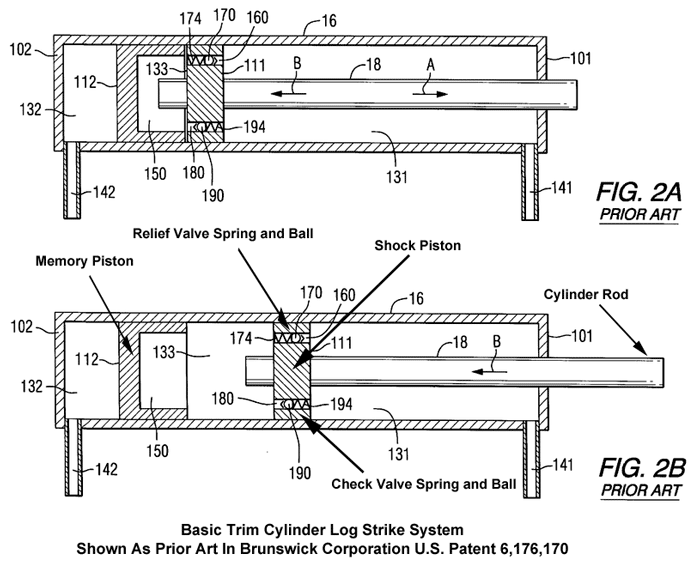Boat Propulsion Impact Relief System: University of Cincinnati thesis
A few months back we came across a 2015 thesis targeting preventing outboard motors and stern drives from breaking off and flipping into boats when striking submerged objects:
Boat Propulsion Impact Relief System
Baccalaureate thesis
College of Engineering and Applied Science
University of Cincinnati
Mechanical Engineering Technology
Jared Frizzi
30 April 2015
We congratulate Mr. Frizzi for choosing his topic in this field and are glad he was at least partially influenced by our site, even if it was probably later on in his project. However, his work was based on several incorrect assumptions, reducing the contribution he could have made to the field of propeller safety.
Again, we really appreciate him choosing propeller safety related topic, but want to use this opportunity to again encourage anyone choosing a student project off our list to contact us for some guidance. We definitely do not want to take over your project, but we can help point you the right direction, point you to some great resources, help you be successful, and help your work make the largest impact possible.
In this instance, the researcher incorrectly thought Mercury Marine was the only marine drive manufacturer using log strike systems (hydraulic cushioned tilt cylinder) and that Mercury only used them on their outboards. Thus the researcher undertook to develop a bolt on kit of hydraulic parts to add this feature to existing boats powered by stern drives or by non-Mercury outboard motors. He basically tried to solve a problem that does not exist. All modern stern drives and larger outboards with hydraulic trim systems already have internal log strike systems of the nature of Brunswick’s shown below.
The young man visited with several people along the way that thought there was a need for this project, including a Sea Ray dealer and his certified technician that had seen numerous boats damaged from striking debris. Those interviewed expressed interest. The mechanic expressed a need for the system to kill the engine when submerged objects were struck to limit damage to the propeller. It would have been nice if someone would have been knowledgeable of log strike systems and explained they were already in all large outboards and stern drives.
Along the way Mr Frizzi went through the process of selecting what he felt was the best design, sizing components, constructing and testing the system.
He also came up with what he thought would be an acceptable retail cost for the system. We saw no mention of an estimated manufacturing cost to be able to sell at that price point.
It looks like 20mph was selected as the target speed for a Wellcraft with a MerCruiser Alpha I drive due to that being the speed of a previous impact in his boat. He makes no mention of what happens to his system or the vessel at higher impact speeds. To compound things, he unknowingly tested his system on a boat that already had a log strike system built into the MerCruiser stern drive. He was basically cobbling one log strike system on top of another one.
We hate to see such energies not being applied to the real problem: Preventing stern drives and outboards that already have a log strike system on them from breaking off and entering the boat when striking submerged objects at higher speeds.
The report does include some nice graphics, images, and line drawings (at least one of them is from our site). It looks like he probably ran up against the deadline due date date. We have all encountered that problem before.
These “real world” projects and deadlines can teach young men and women a lot of valuable lessons in advance of their careers. Like things don’t always go the way you planned. One failure during the testing of this project was particularly memorable.
Anyway, thanks to Mr. Frizzi, and we wish him the best.
Another tip for those who follow in his footsteps, misinformation is rampant surrounding boat propeller safety issues. Mr. Frizzi had no reason to anticipate that. Be careful to verify information from the boating industry, from other sources, including from us before accepting it and proceeding with your project.
If anybody out there is considering working on a class project related to boat propeller safety, please contact us first so we can help your efforts have the greatest impact.
